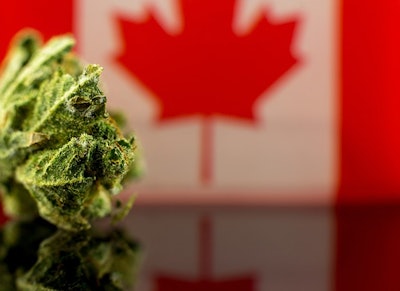
Big things are happening with our neighbor to the north. On June 19, after Bill C-45 (officially, the Cannabis Act) bounced back and forth between both houses of Canada's Parliament, the Senate approved the Cannabis Act, sending it to royal assent. Shortly thereafter, Prime Minister Justin Trudeau, who'd championed the idea of legalizing adult-use cannabis for years, announced that Oct. 17, 2018, would represent the official waving of the green flag for recreational marijuana in Canada.
Aside from the fact that Canada is set to become the first industrialized country in the world to have legalized recreational cannabis, it's also on track to add in the neighborhood of $5 billion annually to this rapidly growing industry. Going from a few hundred million dollars in annual sales to billions each year is what's coerced investors to pile into marijuana stocks.
Looking into the Canadian cannabis crystal ball
But, truth be told, there's a lot we still don't know about Canada's legal cannabis industry. Namely, because no industrialized country has ever legalized recreational marijuana before, there's no precedent to look back on with regard to demand, supply or other industry intangibles. However, unknowns aren't going to stop me from making prognostications about the Canadian cannabis industry. While I can't guarantee they'll come true, here are four reasonable predictions for legalization in Canada.
1. Cannabis shortages will extend through 2019
When the calendar changes to Oct. 17, it's practically a guarantee that demand for marijuana is going to exceed supply--and by a significant amount. Regulatory agency Health Canada predicts that demand could hit 1 million kilograms domestically each year. Meanwhile, production for every licensed grower combined may not even be at half of this level on an extrapolated annual basis by Oct. 17. That should be a recipe for relatively strong per-gram cannabis prices out of the gate.
There are two particular reasons for this pot shortage, and my expectation that it'll continue until at least the end of 2019. First, capacity expansion for cannabis growers has been staggered. Growers had to be certain that the Cannabis Act would pass before they were going to spend tens or hundreds of millions of dollars on expansion. Passage didn't appear to be a near-certainty until roughly seven months ago, when the federal government worked out a two-year tax-sharing agreement with nearly all Canadian provinces. With most expansion projects expected to be completed between mid-2018 and the end of 2020, it'll take time before the annual run rate of supply meets demand.
Top Image: © Konrad | Adobe Stock


























